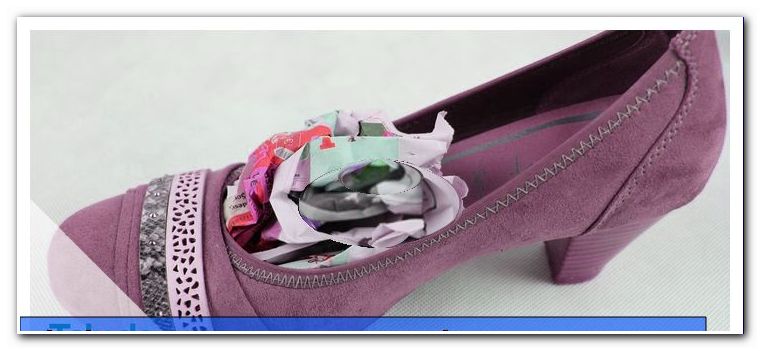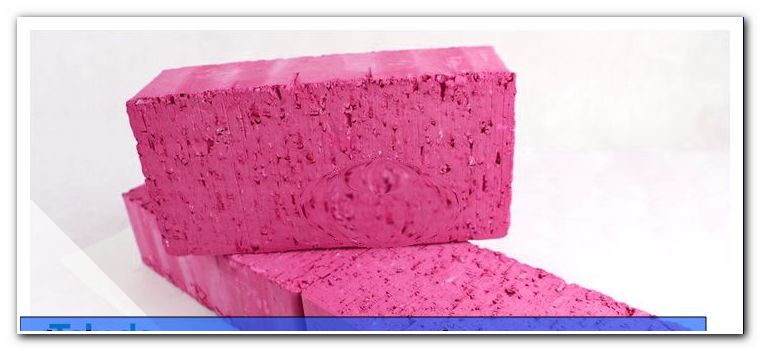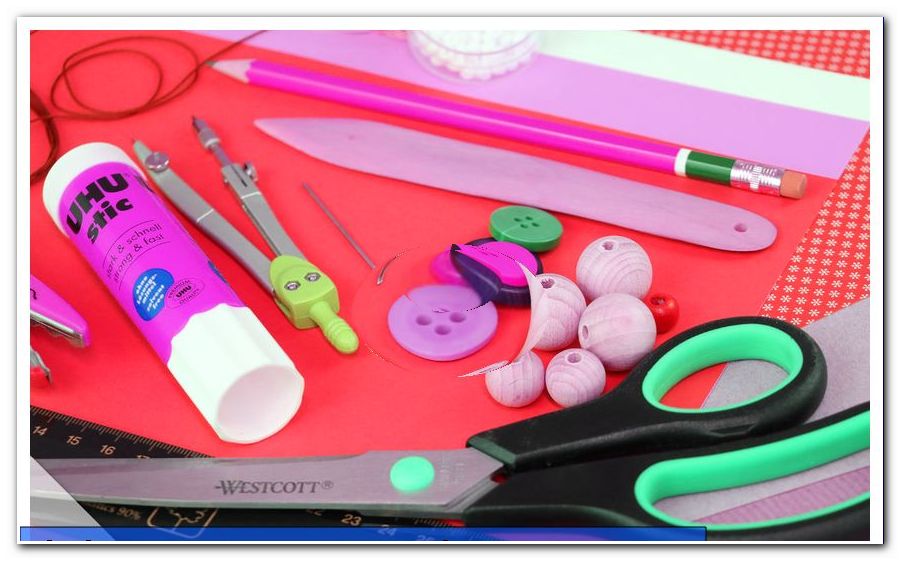Knitting Children's Hat - Free Guide + Size Chart

- knitting preparation
- Size Chart
- Which needle is suitable "> stitch test and stitching
- Knitting cuffs
- Knit cap, main area
- hat pattern
- Knit cap
- Detailed instructions: Sample cap
- Pattern I (crease pattern) in rounds
- Pattern II (cap pattern) in rounds
- Pattern III (cap) in rounds
You want to knit a kids cap? Here you will find the manual with the appropriate size charts for all ages and different wool sizes. There are so many color and pattern variations in knit hats - so it may well be that it does not stay with a specimen and your kids can look forward to a whole stack of self-made headgear.
The instructions describe how to knit a cap in three steps: cuff - cap pattern and cap. Since there are several knitting possibilities for each area, you can assemble your desired cap in the modular system yourself.
knitting preparation
Size Chart
| Older | head circumference | cap height |
| 1 - 2 years | 48 - 51 cm | 16 cm |
| 3 - 5 years | 52 - 53 cm | 17 cm |
| 5 - 8 years | 54 - 55 cm | 18 cm |
| 8 - 14 years | 56 - 57 cm | 19 cm |
There are of course several ways to knit a children's cap. I think it's quickest and easiest, if you work the knit cap directly in rounds. Beginning with the cuff, knit straight with a pair of needles or a short circular needle. The caps for the cap are evenly distributed in the final rounds. A small loop can be pulled together with the work thread. There is no hole at the upper end of the cap and no need for a rear seam.
Which needle is suitable?
If all around knitted, you grab - as the name suggests - best to a round needle. However, the needle as a whole should be no longer than the circumference of the respective knitted part. There are special caps circular needles with a length of 40 cm. With these practical helpers, which are perfectly adapted to the head movement, it works wonderfully. Advantage of the circular needle: Anyone who has ever worked with a needle point may know the problem of unsightly transitions when changing the needle. This does not happen with the round needle.
Coming to the cap and the decreases, the number of stitches decreases quite quickly. From now on, working with the round needle no longer works and the needluckle must be taken to hand.
Knitters, who like to work with a needle-punching game, can, of course, work from the beginning with the five single short needles on their children's hats. The stitches are evenly distributed over four needles. (Pinch 1/4 of the stitches on one needle, pick up the second needle and make another stitch, stitch on the third needle, tap the fourth needle). If you are not sure about this, you can first hit the entire number of stitches on an auxiliary needle and then replace it. The stitches are knitted with a fifth needle.

Knitting in rounds: On a short round needle or a needle play hit the desired number of stitches. Take care that this initial round is not twisted. Combine the beginning of the lap and the end of the round and knit the first stitch without any transition.

From now on will continue to knit. It does not need edge stitches. The work is always rotated and not turned, as is the case with knitting with front and back rows.
Stitch test and stitching
The Gretchen question when cap knitting is: how many stitches I suggest ">

Table for the stitch stop
Click here: Table for the stitch stop
Knitting cuffs
One stitch on the right, one stitch on the left alternating - this is the standard knit cuffs. The stitching draws a bit at this pattern, so that the cuff then tighter on the head sits, as the rest of the cap.
Alternatively, the following patterns are suitable:
- * 2 right stitches, 2 left stitches *, * * always repeat
- * 1 stitch crossed right, 1 stitch left *, * * repeat
- The cuffs can be knitted on the crotch right (in rounds: * knit one round on the right, knit one round on the left *, * * repeat).
- Looks very noble: cuffs in the cable pattern
Height of the cuff in children's hats: variable, about 4 - 6 cm.
Knit cap, main area
When the cuff is knitted, the main part of a cap begins without transition. There are only a few restrictions on sample requests. Allowed is what pleases. Please make sure that the total number of stitches of the cap can be divided by the number of stitches of each pattern set. Example: The children's cap is knitted with 56 stitches and a checkerboard pattern is to be used, each of which goes over 6 stitches. 56 can not be divided by 6 and there are complications in the course of the round. Either the mesh size must be changed or the checkerboard pattern is z. B. reduced to 4 mesh.
hat pattern
The classic version (smooth right) is especially good when working with colorful gradient wool. Here, the colors come into their own and complicated patterns can be safely dispensed with.
The pattern cap in this manual shows the cap pattern "kraus rechts".
Beautiful looks also a pear pattern
»1st row: * 1 stitch on the right, 1 stitch on the left *, * * repeat
»2nd row: * 1 stitch left, 1 stitch right *, * * repeat
»Always repeat the 1st and 2nd rows
checkerboard
»1st - 3rd row: * 3 stitches on the right, 3 stitches on the left *, * * repeat
»4th - 6th row: * 1 stitch left, 1 stitch right *, * * repeat
»Always repeat these 6 rows
Knit cap
In order to adapt the cap afterwards to the head, declines have to be made in this area.
star-shaped decrease for a domed cap: if continuous decreases (in every 2nd round) are made, the cap bulges perfectly. For this, the total mesh number is divided. If possible, I divide by 8. Then the two first stitches of a needle are knitted together and the decrease made again in the middle of each needle. The detailed instructions are described below in our sample cap.
quick decrease for a bobble hat: in this weight-loss variant is knitted up almost to the upper cap edge in straight rounds. Then a lot of stitches are taken off at once (knit 2 stitches together). The mesh has been halved. Either you pull all remaining stitches together immediately or you repeat the quick decrease in a second round. The end result is a shirred cap tip on which a bobble can be placed.
slow decrease for a pointed cap: If you want to create a pointed cap when knitting, the declines are made very leisurely and repeatedly inserted several rows without accepting. (For example, knit the first two stitches of a needle together.) The number of stitches decreases by four stitches, repeat this decrease only every fourth row.)
Here are different color and pattern variations:

Detailed instructions: Sample cap
material list
- 3 balls Merino wool (run length 70 m / 50 g) - in a two-tone design also 2 balls are sufficient
- 1 cap round needle 40 cm, needle size 7 + 1 double pointed needles, needle size 7
Pattern I (crease pattern) in rounds
1st round: 1 stitch on the right, 1 stitch left on the change
2nd round: 1 stitch on the right, 1 stitch left on the change
Repeat these two rounds.
Pattern II (cap pattern) in rounds
The cap pattern is knit on the crotch right with two colors in rounds.
1st round: right stitches (color 2)
2nd round: left stitches (color 3)
3rd round: right stitches (color 2)
4th round: left stitches (color 3)
Repeat these 4 rounds. When changing colors, cross the threads on the inside of the cap to avoid holes.

Pattern III (cap) in rounds
The cap is knitted smooth right.
Strickanleitung
Make 56 stitches for the cuff (color 1). Close the stitches for the round.

The round crossing is later on the back of the cap. Now knit 10 rounds in the rib pattern (pattern I). Height of the cuff: approx. 5 cm.

The cap area above the cuff is knit at the crotch right (pattern II). To do this, make a right round with color 2. The color change makes it very easy to see when this first round is complete. For the second round on the first right hand stitch of the preliminary round just knit a left stitch. When the left hand round is completed, it changes to color 3. Use color 3 to knit again a right and then a left round. Change color again and knit a total of 16 rounds in this pattern and stripe sequence.

Change back to color for cap cap 2, continue knitting in right stitch. Since the number of stitches decreases as a result of the following decreases, switch to a double-needle play in the third round.
1st round: Knit 56 right stitches
2nd round: Knit 56 right stitches
3rd round: To knit, pick up a needle from the double-needle game. Knit 5 right stitches, knit 6th and 7th stitch together on the right side.

Knit 5 right stitches again and knit 6th and 7th stitch together on the right side. Now pick up the second needle of the double needle game. Knit 5 right stitches, knit 6th and 7th stitch together on the right side. Knit 5 right stitches again and knit 6th and 7th stitch together on the right side. Now pick up the third needle of the double needle game. Knit 5 right stitches, knit 6th and 7th stitch together on the right side. Knit 5 right stitches again and knit 6th and 7th stitch together on the right side. Now pick up the fourth Needle Needle Needle. Knit 5 right stitches, knit 6th and 7th stitch together on the right side. Knit 5 right stitches again and knit 6th and 7th stitch together on the right side. There are 12 stitches on each of the four needles.

4th round: Knit off the 48 remaining stitches on the right.
5th round: * Knit the 1st to 4th stitches of the first needle on the right and knit the 5th and 6th stitches on the right side. Knit off the 7th to 10th stitches on the right and knit the 11th and 12th stitches on the right side. From * to * also knit the remaining three needles. There are now 10 meshes on each of the four needles.
6th round: Kick off the 40 remaining stitches on the right.
Round 7: * Knit the 1st to 3rd stitches of the first needle on the right and knit the 4th and 5th stitches on the right. Knit off the 6th to the 8th stitch on the right and knit the 9th and 10th stitches on the right. From * to * also knit the remaining three needles. There are now 8 stitches on each of the four needles.
Round 8: Kick off the remaining 32 stitches on the right.
Round 9: * Knit the 1st and 2nd stitches of the first needle on the right and knit the 3rd and 4th stitches on the right. Knit off the 5th and 6th stitches on the right and knit the 7th and 8th stitches on the right side. From * to * also knit the remaining three needles. There are now 6 stitches on each of the four needles.
Round 10: Knit off the 24 remaining stitches on the right.
Round 11: * Knit the 1st stitch of the first needle on the right and knit the 2nd and 3rd stitches on the right. Knit the 4th stitch on the right and knit the 5th and 6th stitches on the right. From * to * also knit the remaining three needles. There are now 4 stitches on each of the four needles.
Round 12: Knit 2 stitches together. Now 2 stitches remain on each needle.

13. Cut the work thread and pull it through the remaining 8 stitches using a darning needle.
 (Pull the needle through the stitches and pull out the knitting needle.) Once all 8 stitches have been threaded, pull the work thread inwards.
(Pull the needle through the stitches and pull out the knitting needle.) Once all 8 stitches have been threaded, pull the work thread inwards.

Short-Strickanleitung
- Cuffs: Cast on the desired number of stitches and close to the round
- Cuff Pattern: 1 stitch on the right, 1 stitch on the left or at your option
- Continue to knit in any cap pattern after approx. 5 cm until the child's hat reaches about head height
- for the bonnet remove continuously
- pull the remaining stitches together with the work thread





